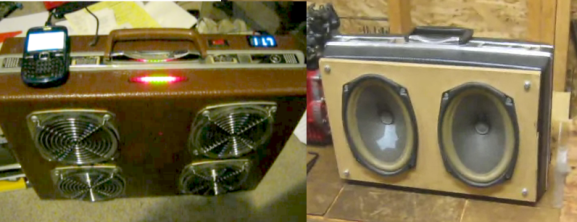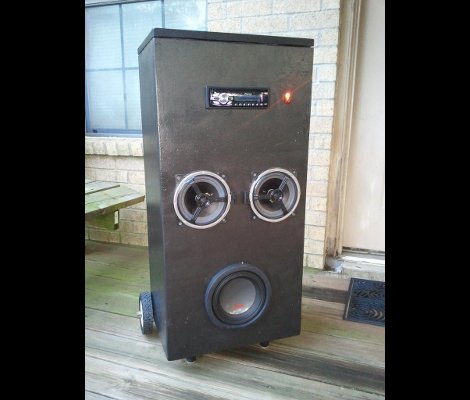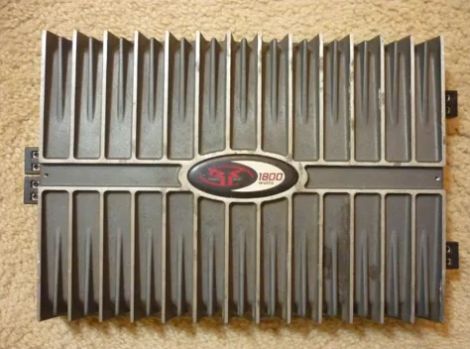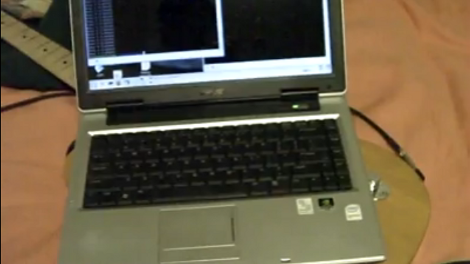
Here are two different briefcase speaker projects. [Dale] built the offering on the right back in high school and the upgraded version 2.0 more recently. He was inspired to send in a tip for the projects after seeing yesterday’s suitcase full of tunes.
The first version uses a pair of speakers pulled out of a car at the junkyard. They’re mounted on some particle board which beefs up the side of the plastic briefcase. The amplifier that drives it is mounted inside the case along with a battery to power the system. [Dale] included a crude storage bracket for the input cable and since the amp can drive four speakers there are connectors on the outside for two more.
Version two has quite a bit more polish. He doesn’t show that one off quite as much, but you can see there is a LED strip on the case that serves as a VU meter, as well as a numeric display which might be battery voltage? He mentions that this blows away any commercially available systems his coworkers have brought to the job site.
Video of both rigs can be found after the break.

















